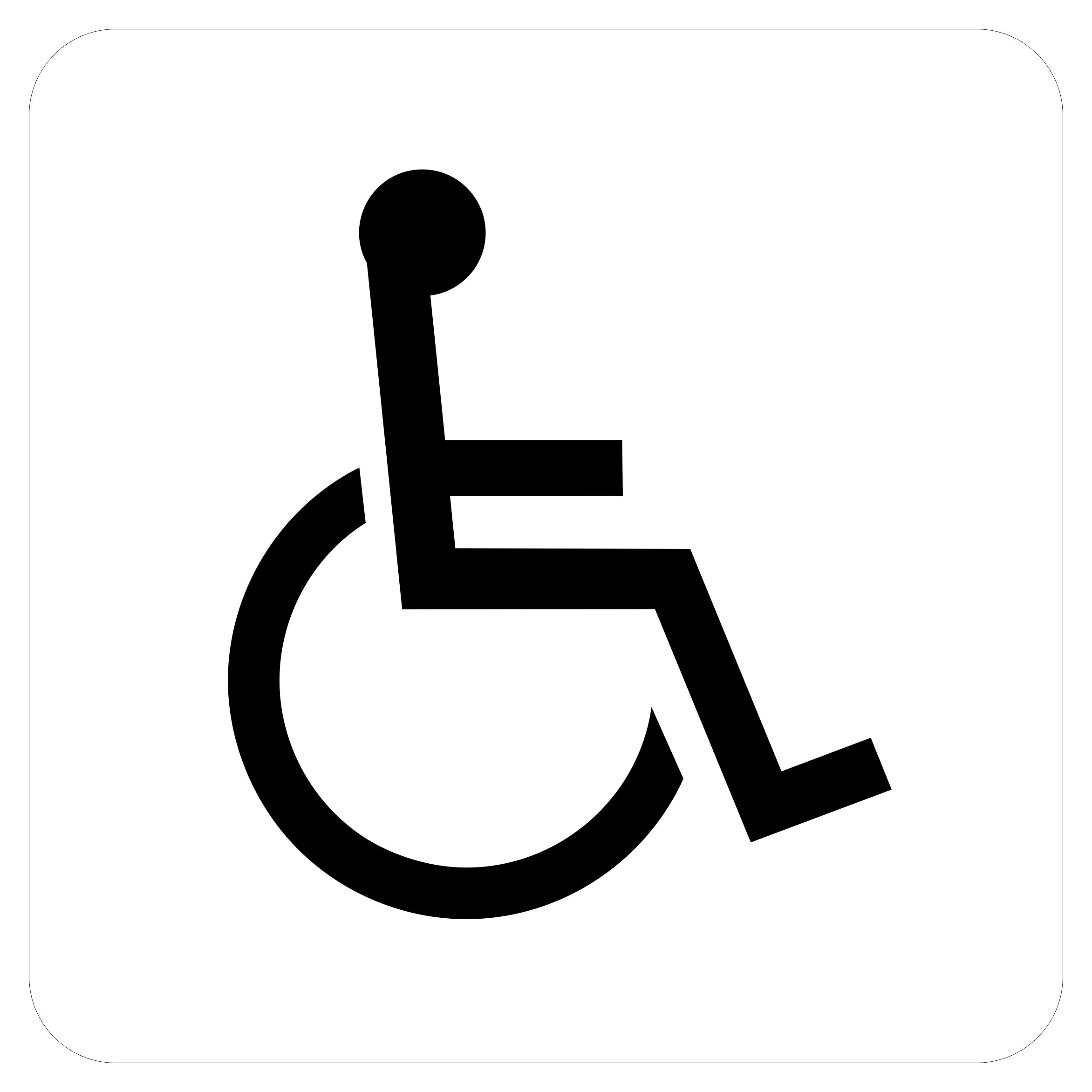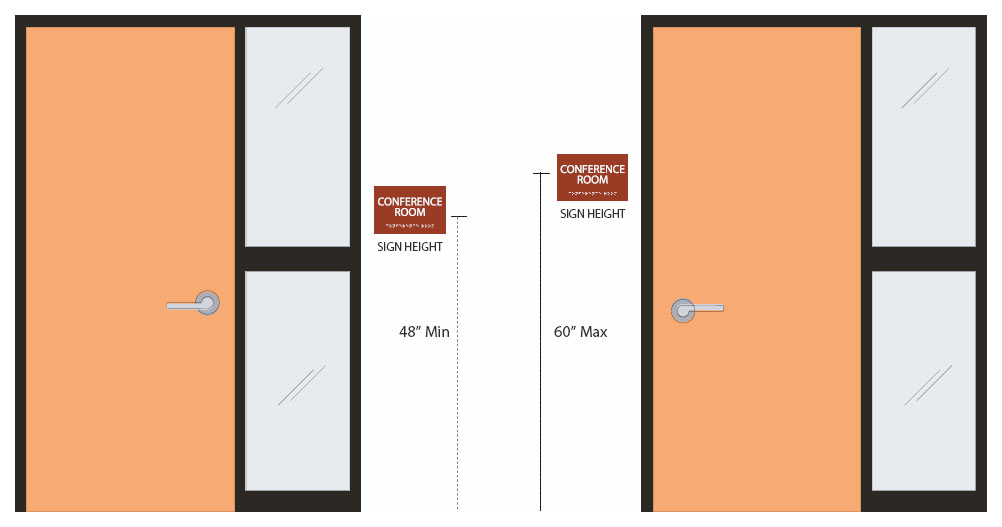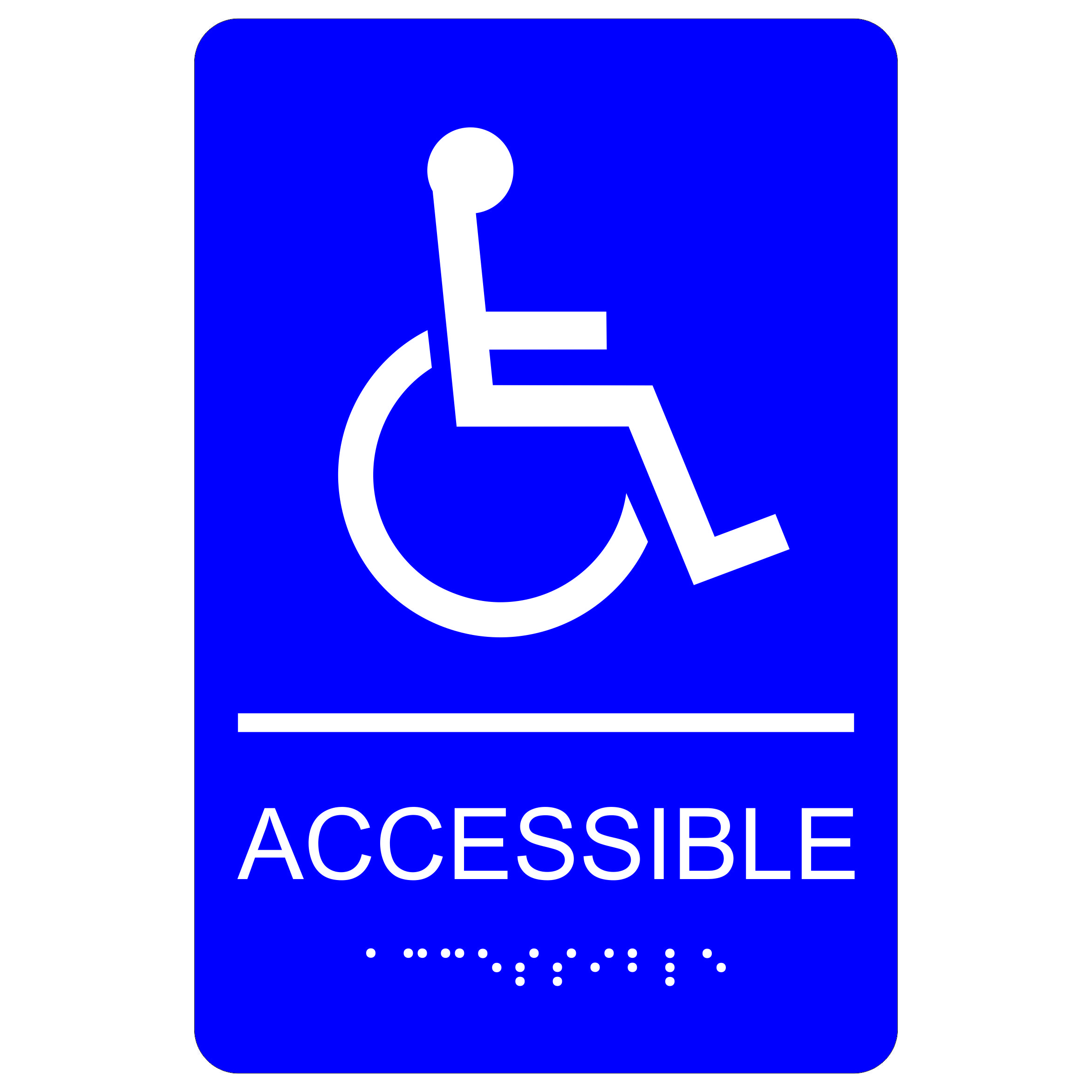A Comprehensive Guide to Picking the Right ADA Signs
A Comprehensive Guide to Picking the Right ADA Signs
Blog Article
Discovering the Secret Attributes of ADA Indicators for Boosted Access
In the realm of ease of access, ADA indicators offer as quiet yet powerful allies, making certain that areas are inclusive and navigable for people with impairments. By integrating Braille and responsive elements, these indicators damage obstacles for the visually damaged, while high-contrast shade schemes and understandable typefaces cater to varied visual requirements.
Relevance of ADA Conformity
Guaranteeing conformity with the Americans with Disabilities Act (ADA) is important for cultivating inclusivity and equivalent accessibility in public areas and workplaces. The ADA, passed in 1990, mandates that all public centers, companies, and transport services accommodate individuals with handicaps, guaranteeing they take pleasure in the very same rights and opportunities as others. Compliance with ADA requirements not just satisfies lawful obligations but additionally improves an organization's online reputation by showing its commitment to variety and inclusivity.
Among the key aspects of ADA compliance is the application of accessible signage. ADA indicators are made to make certain that people with disabilities can conveniently browse via structures and rooms. These indications should comply with certain guidelines regarding size, typeface, shade comparison, and positioning to ensure exposure and readability for all. Properly implemented ADA signage helps eliminate obstacles that individuals with handicaps frequently experience, thus promoting their independence and self-confidence (ADA Signs).
Additionally, adhering to ADA regulations can minimize the threat of potential fines and legal repercussions. Organizations that fall short to adhere to ADA guidelines might deal with penalties or legal actions, which can be both destructive and financially difficult to their public image. Hence, ADA compliance is indispensable to fostering a fair environment for everybody.
Braille and Tactile Elements
The consolidation of Braille and tactile elements into ADA signs embodies the concepts of access and inclusivity. These attributes are important for individuals who are visually impaired or blind, enabling them to browse public spaces with higher independence and self-confidence. Braille, a responsive writing system, is necessary in supplying created information in a style that can be conveniently viewed with touch. It is commonly placed beneath the equivalent message on signage to make sure that people can access the information without visual support.
Tactile elements prolong beyond Braille and include elevated symbols and characters. These parts are designed to be noticeable by touch, allowing people to recognize space numbers, restrooms, leaves, and various other crucial areas. The ADA establishes certain guidelines concerning the size, spacing, and positioning of these responsive aspects to optimize readability and guarantee uniformity across various settings.

High-Contrast Shade Systems
High-contrast color pattern play a critical role in boosting the visibility and readability of ADA signage for people with visual impairments. These systems are necessary as they take full advantage of the distinction in light reflectance between message and background, making certain that indications are quickly noticeable, even from a range. The Americans with Disabilities Act (ADA) mandates the use of details shade Look At This contrasts to accommodate those with limited vision, making it a crucial element of compliance.
The efficiency of high-contrast colors lies in their ability to stand out in different lighting conditions, including poorly lit environments and areas with glare. Commonly, dark text on a light background or light message on a dark background is utilized to attain optimum contrast. Black message on a white or yellow history offers a plain aesthetic distinction that assists in fast recognition and comprehension.

Legible Fonts and Text Size
When taking into consideration the style of ADA signs, the choice of readable typefaces and appropriate text size can not be overstated. These components are crucial for ensuring that signs come to individuals with aesthetic disabilities. The Americans with Disabilities Act (ADA) mandates that typefaces have to be sans-serif and not italic, oblique, script, extremely attractive, or of unusual kind. These needs aid ensure that the text is quickly readable from a range which the personalities are distinct to diverse audiences.
The size of the message likewise plays a crucial duty in ease of access. According to ADA guidelines, the minimal text height must be 5/8 inch, and it ought to increase proportionally with viewing range. This is specifically crucial in public rooms where signage demands to be read promptly and properly. Consistency in message size contributes to a cohesive visual experience, assisting people in navigating environments efficiently.
Moreover, spacing between letters and lines is important to legibility. Ample spacing protects against characters from showing up crowded, enhancing readability. By adhering to these criteria, designers can dramatically enhance accessibility, making sure that signage serves its designated objective for all individuals, no matter of their aesthetic capabilities.
Effective Positioning Techniques
Strategic positioning of ADA signs is necessary for making the most of ease of access and making sure compliance with legal criteria. ADA guidelines stipulate that indications must be installed at a height between 48 to 60 inches from the ground to guarantee they are within the line of sight for both standing and seated individuals.
In addition, signs have to be positioned nearby to the latch side of doors to enable simple recognition prior to entrance. Consistency in indication placement throughout a facility enhances predictability, decreasing complication and enhancing total individual experience.

Conclusion
ADA indications play an essential duty in advertising access by incorporating functions that deal with the requirements of individuals with disabilities. These aspects jointly cultivate an inclusive atmosphere, emphasizing the relevance of ADA conformity in guaranteeing equal access for all.
In the world of ease of access, ADA signs serve as silent yet effective allies, ensuring that areas are navigable and comprehensive for individuals with disabilities. The ADA, passed in 1990, mandates that all public facilities, companies, and check over here transport solutions fit people with handicaps, ensuring they enjoy the very same rights and possibilities as others. ADA Signs. ADA signs are developed to make sure that people with specials needs can conveniently navigate through buildings and rooms. ADA standards stipulate that indicators ought to be installed at an elevation in between 48 to 60 inches from the ground to ensure they are within the line of view for both standing and seated individuals.ADA indications play an important duty in promoting availability by official source integrating attributes that attend to the requirements of people with specials needs
Report this page